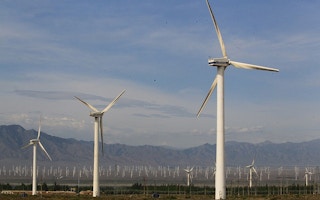The Climate Bonds market grew to US$694 billion (AU$925b) over the past year, an increase of 16 per cent, with more growth expected as investors respond to the agreement to limit global warming struck in Paris last year.
According to the latest Climate Bond Initiative’s Bonds & Climate Change: State of the Market 2016 report released this week, there were US$694 billion of climate-aligned bonds outstanding, an increase of $96 billion on the 2015 data. The figure includes US$118 billion of labelled green bonds, which now comprise 17 per cent of the total, up from 11 per cent in 2015.
CBI estimates the total market comprises approximately 3590 bonds from 780 issuers across the CBI themes of transport, energy, buildings & industry, water, waste & pollution and agriculture & forestry.
Bonds within the transport theme dominated, with outstanding bonds for low carbon transport comprising 67 per cent of the market. Energy was the second largest sector at 19 per cent.
Buildings and industry made up two per cent of the climate-aligned total. These bonds finance improvements in energy efficiency of buildings or products. Sixty-seven per cent of the bonds in this sector were linked to low carbon buildings, the report said, and 79 per cent were labelled green bonds.
“
Climate bonds have an important role to play by delivering capital into projects which reduce emissions and increase resilience to climate impacts.
Emma Herd, chief executive, Investor Group on Climate Change
The largest issuer in the buildings space was Unibail-Rodamco, said to be Europe’s largest listed real-estate company. All of its issuance was labelled green bonds. French property developer Société Fonçière Lyonnaise, which has 100 per cent of its property portfolio BREEAM-certified, was the second largest issuer.
CBI used LEED and BREEAM schemes as a key criteria to identify unlabelled green bonds linked to green buildings, the report said. It also included real estate investment trusts and companies that generate more than 95 per cent of their operating revenue from assets certified at BREEAM Good or above, or at LEED Gold or above.
The analysis showed that nearly all of the outstanding low carbon buildings bonds have tenors of five years or more.
The report also highlighted the role of institutional investors in growing the market following a number of COP 21 commitments by organisations, companies and financial bodies.
It noted that the insurance industry had reiterated its commitment to increasing its climate smart investments by a factor of 10 by 2020. The Bank of England’s Prudential Regulation Authority has also recommended green bonds as a climate-related investment opportunity for UK insurance firms, the report said.
There is also growing interest in climate-aligned investment from signatories to the United Nation’s Principles for Responsible Investment. There are 1525 signatories to date, the report said, representing $60 trillion of funds under management.
CBI chief executive Sean Kidney said the rise of green bonds showed that bridging the climate finance gap didn’t require complex new investment models.
“The re-alignment of bond market activity with climate change and low emission goals will deliver a stable long term source of green investment. This report shows that the large scale harnessing of bonds and other forms of debt based capital towards climate and carbon goals is within reach,” he said.
“Green bond based capital to fund infrastructure projects are now an established model. As countries look to turn their [Intended Nationally Determined Contributions] commitments into climate plans, the report shows that green and climate resilient transport, urban development, water and energy projects are already being financed by green bonds and can be scaled up.”
Investor Group on Climate Change chief executive Emma Herd said the finalisation of the Paris Agreement meant that more investors were looking to put money in projects that would help deliver the goal of limiting global warming to well below two degrees.
“Climate bonds have an important role to play by delivering capital into projects which reduce emissions and increase resilience to climate impacts,” she said.
This story was republished with permission from The Fifth Estate.








